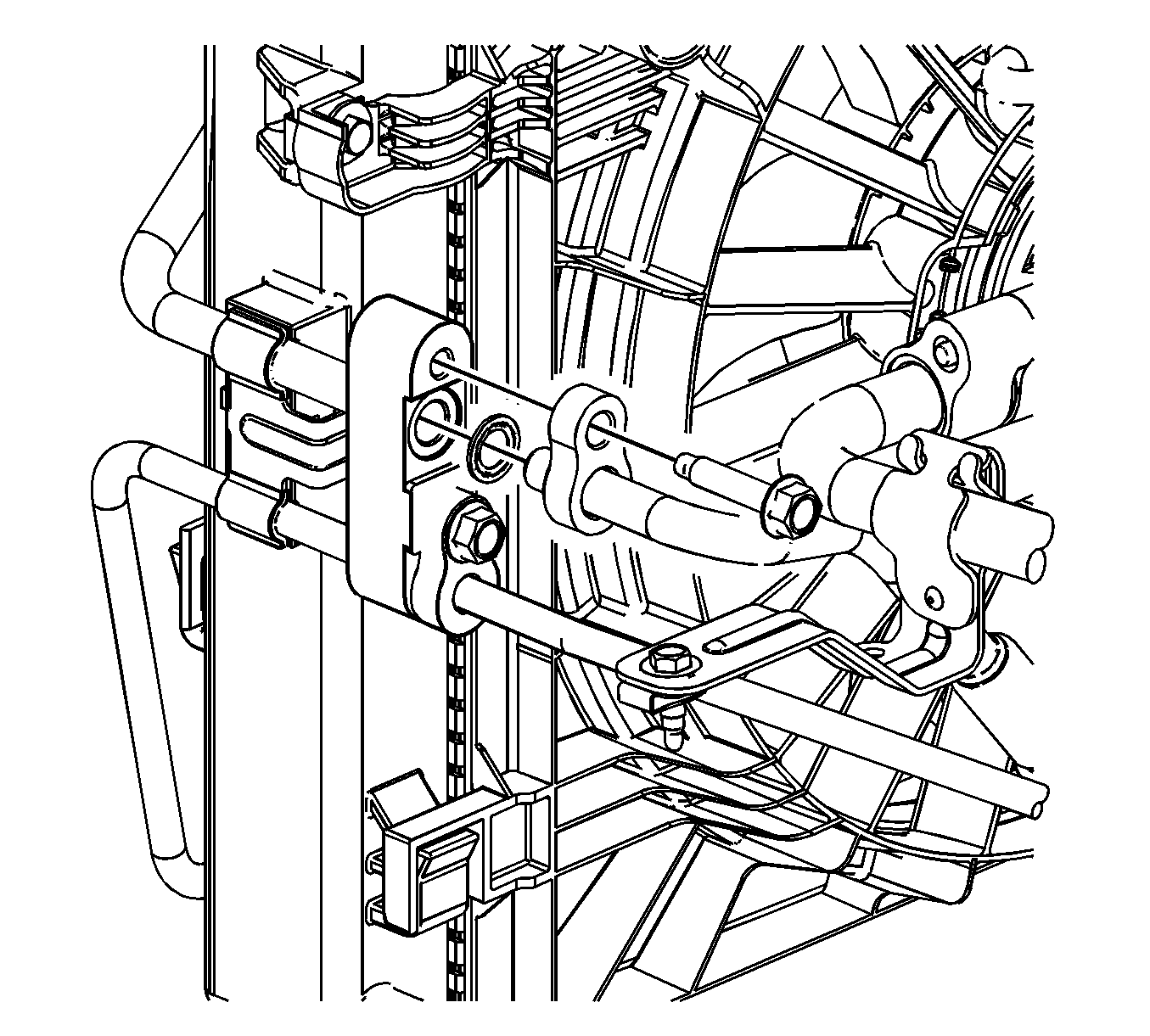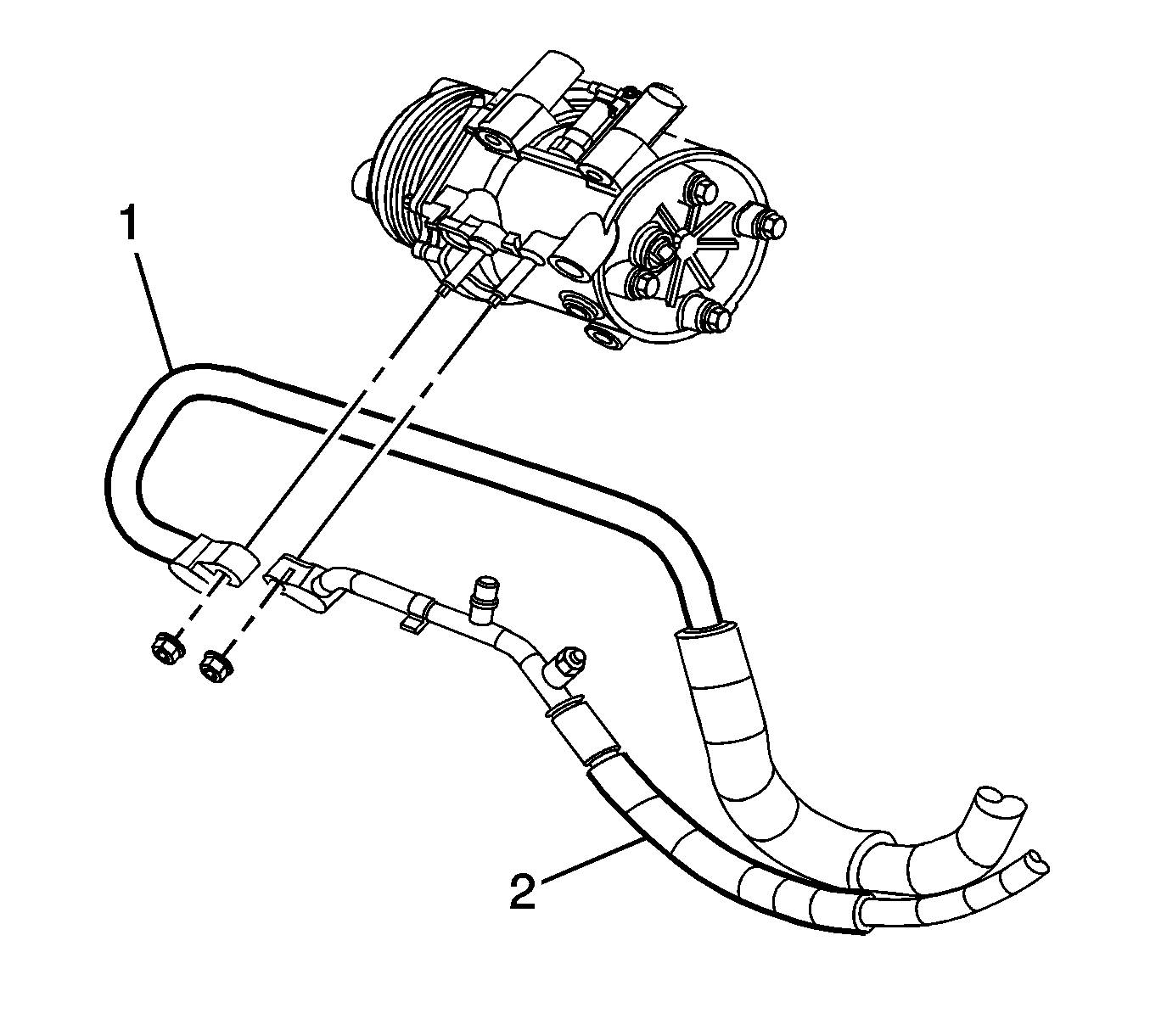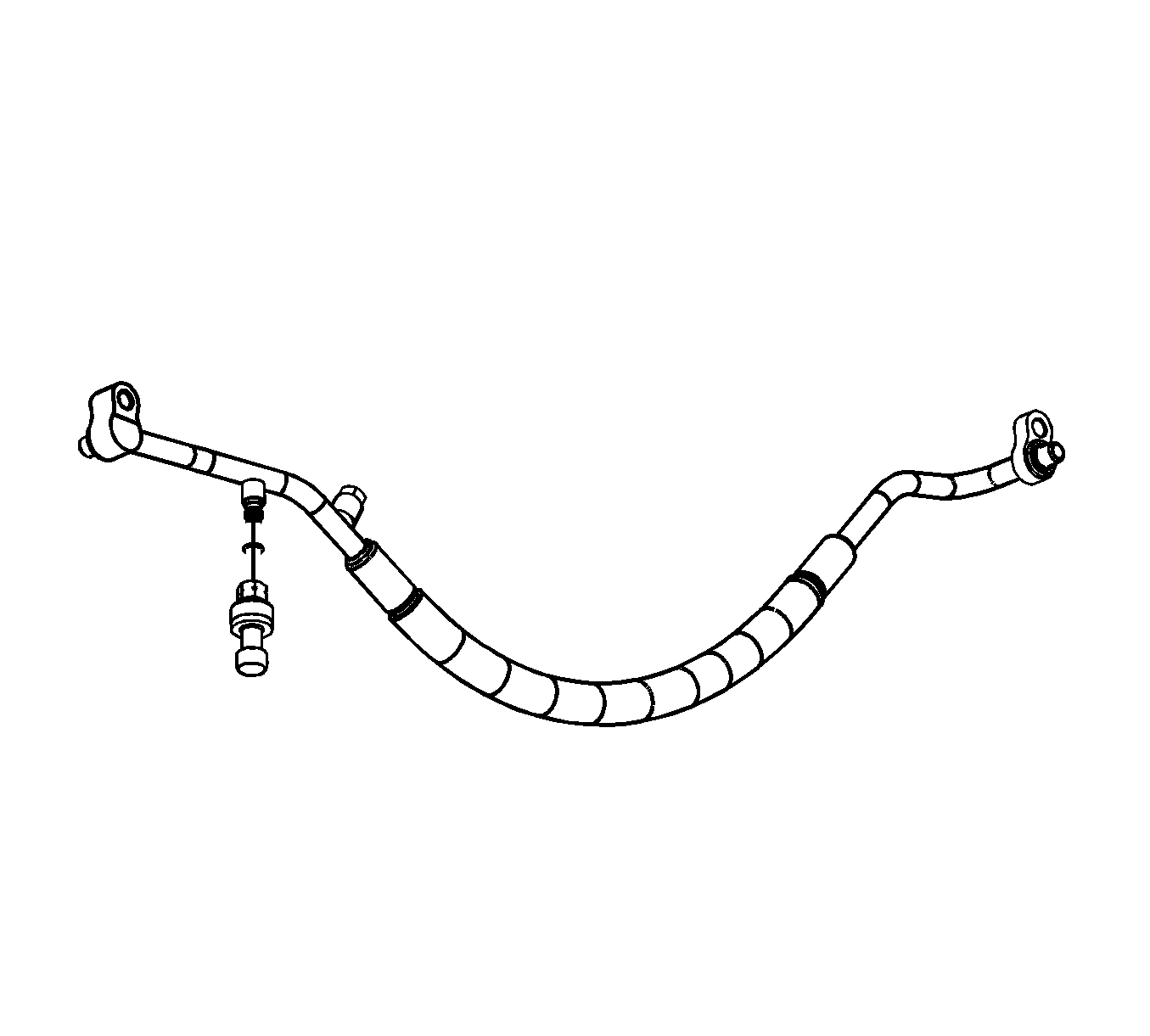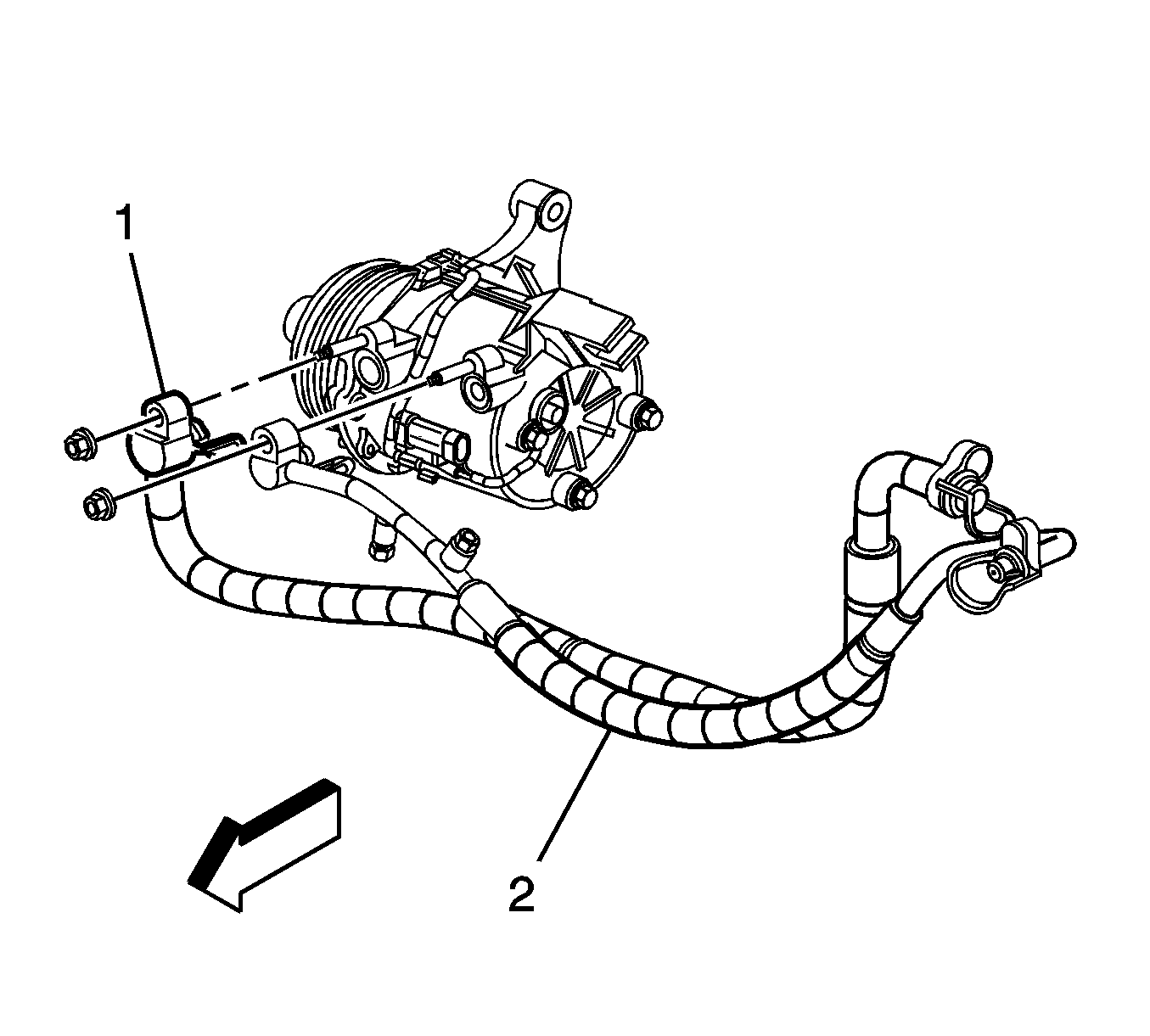For 1990-2009 cars only
Discharge Hose Replacement LX9
Tools Required
J 39400-A Halogen Leak Detector
Removal Procedure
Important: Cap or tape the open air conditioning (A/C) components immediately in order to prevent system contamination.
- Recover the refrigerant from the A/C system. Refer to Refrigerant Recovery and Recharging .
- Remove the A/C discharge hose to A/C condenser bolt.
- Remove the A/C discharge hose from the A/C condenser.
- Remove and discard the sealing washer.
- Remove the radiator air baffle. Refer to Radiator Air Baffle Assemblies and Deflectors.
- Remove the A/C discharge hose to A/C compressor nut.
- Remove the A/C discharge hose from the A/C compressor.
- Remove and discard the sealing washer.
- Disconnect the A/C pressure sensor electrical connector.
- Remove the A/C discharge hose (2).
- Remove the A/C pressure sensor.
- Remove and discard the A/C pressure sensor O-ring.



Installation Procedure
- Install a NEW O-ring to the A/C discharge hose.
- Install the A/C pressure sensor.
- Install new sealing washers to the A/C discharge hose. Refer to Sealing Washer Replacement .
- Remove the cap or tape from the A/C compressor discharge port.
- Install the A/C discharge hose (2) to the A/C compressor.
- Install the A/C discharge hose to A/C compressor nut.
- Install the radiator air baffle. Refer to Radiator Air Baffle Assemblies and Deflectors.
- Remove the cap or tape from the discharge port on the A/C condenser.
- Install the A/C discharge hose to the A/C condenser.
- Install the A/C discharge hose to A/C condenser bolt.
- Evacuate and recharge the A/C system. Refer to Refrigerant Recovery and Recharging .
- Leak test the fittings of the A/C components using the J 39400-A .

Notice: Refer to Fastener Notice in the Preface section.
Tighten
Tighten to 5 N·m (44 lb in).

Tighten
Tighten the nut to 16 N·m (12 lb ft).

Tighten
Tighten the bolt to 16 N·m (12 lb ft).
Discharge Hose Replacement LZ9
Tools Required
J 39400-A Halogen Leak Detector
Removal Procedure
Important: Cap or tape the open air conditioning (A/C) components immediately in order to prevent system contamination.
- Recover the refrigerant from the A/C system. Refer to Refrigerant Recovery and Recharging .
- Remove the A/C discharge hose to A/C condenser bolt.
- Remove the A/C discharge hose from the A/C condenser.
- Remove and discard the sealing washer.
- Remove the radiator air baffle. Refer to Radiator Air Baffle Assemblies and Deflectors .
- Remove the A/C discharge hose to A/C compressor nut.
- Remove the A/C discharge hose (2) from the A/C compressor.
- Remove and discard the sealing washer.
- Disconnect the A/C pressure sensor electrical connector.
- Remove the discharge hose (2).
- Remove the A/C pressure sensor.
- Remove and discard the A/C pressure sensor O-ring.



Installation Procedure
- Install a new O-ring to the A/C discharge hose.
- Install the A/C pressure sensor.
- Install new sealing washers to the A/C discharge hose (2). Refer to Sealing Washer Replacement .
- Remove the cap or tape from the A/C compressor discharge port.
- Install the A/C discharge hose (2) to the A/C compressor.
- Install the A/C discharge hose (2) to A/C compressor nut.
- Install the radiator air baffle. Refer to Radiator Air Baffle Assemblies and Deflectors .
- Remove the cap or tape from the discharge port on the A/C condenser.
- Install the A/C discharge hose to the A/C condenser.
- Install the A/C discharge hose to A/C condenser bolt.
- Evacuate and recharge the A/C system. Refer to Refrigerant Recovery and Recharging .
- Leak test the fittings of the A/C components using the J 39400-A .

Notice: Refer to Fastener Notice in the Preface section.
Tighten
Tighten to 5 N·m (44 lb in).

Tighten
Tighten the nut to 16 N·m (12 lb ft).

Tighten
Tighten the bolt to 16 N·m (12 lb ft).
